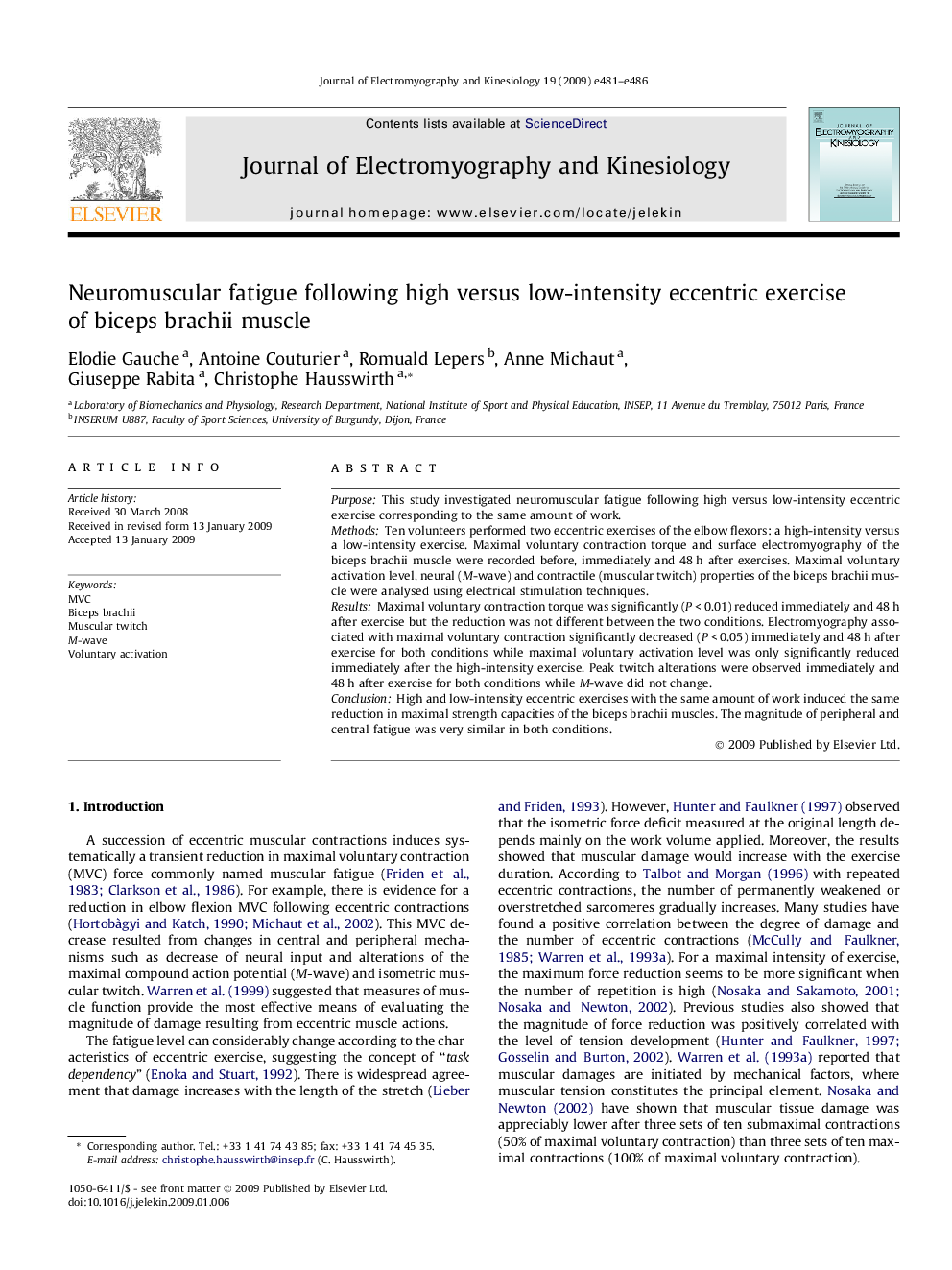| Article ID | Journal | Published Year | Pages | File Type |
|---|---|---|---|---|
| 4065428 | Journal of Electromyography and Kinesiology | 2009 | 6 Pages |
PurposeThis study investigated neuromuscular fatigue following high versus low-intensity eccentric exercise corresponding to the same amount of work.MethodsTen volunteers performed two eccentric exercises of the elbow flexors: a high-intensity versus a low-intensity exercise. Maximal voluntary contraction torque and surface electromyography of the biceps brachii muscle were recorded before, immediately and 48 h after exercises. Maximal voluntary activation level, neural (M-wave) and contractile (muscular twitch) properties of the biceps brachii muscle were analysed using electrical stimulation techniques.ResultsMaximal voluntary contraction torque was significantly (P < 0.01) reduced immediately and 48 h after exercise but the reduction was not different between the two conditions. Electromyography associated with maximal voluntary contraction significantly decreased (P < 0.05) immediately and 48 h after exercise for both conditions while maximal voluntary activation level was only significantly reduced immediately after the high-intensity exercise. Peak twitch alterations were observed immediately and 48 h after exercise for both conditions while M-wave did not change.ConclusionHigh and low-intensity eccentric exercises with the same amount of work induced the same reduction in maximal strength capacities of the biceps brachii muscles. The magnitude of peripheral and central fatigue was very similar in both conditions.
